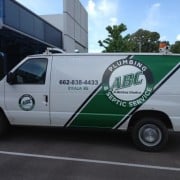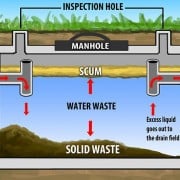Septic Tank Pumping Explained
There are many homes, especially in rural areas, that are far away from any municipal areas and the facilities that they can provide. The lack of a link up to any sewage mains can be offset by these homes with the installation of septic tanks. Septic tanks are a substitute for a sewage treatment system.
A typical septic tank layout will have the waste pipe coming in from the home; that collects all waste water, black and gray. The tank itself is a cylindrical device embedded in the earth at a level that allows all wastewater to flow easily into it. The tank will have some compartments separated by walls that have openings at the top or bottom depending on their position in the tank. These walls help to reduce the flow and allow for the settlement of the solids from the waste. The relatively clear water is then led out from the tank into a drain field which is a pit made in soil and filled with granular material that helps in the decomposition of the sewage water. It is necessary to see that all the parts in this layout of septic tanks are always functional. It is needed to ensure that the outlet from the septic tank that leads into the drainfield is at a lower level than the waste water pipe bringing in the wastewater from the home.
Septic Tank Pumping Ensures That The Tanks Function Properly
The solid material that settles in the septic tank will gradually build up, and it is necessary to see that it never prevents the flow of water. It is, therefore, important for a homeowner to undertake septic tank pumping to clear the solids once they have reached a certain level. This level has to be well clear of the outlet to the drain field. In most septic tank design capacities are calculated in such a way that the solid content of the septic tank will build up only after it has been used for at least a year. It allows the clearing operation to be undertaken at yearly intervals.
There are businesses which undertake septic tank pumping at a cost, and will use their machinery to clean out the septic tank. The solid material from the septic tank is unloaded into tankers which will have pumps mounted on them. The solid waste is then taken to the nearest sewage disposal plant or other designated dumping areas. Septic tanks must be inspected after the pumping is completed and repairs, if necessary, must be carried out.
Septic Tank Pumping











Leave a Reply
Want to join the discussion?Feel free to contribute!